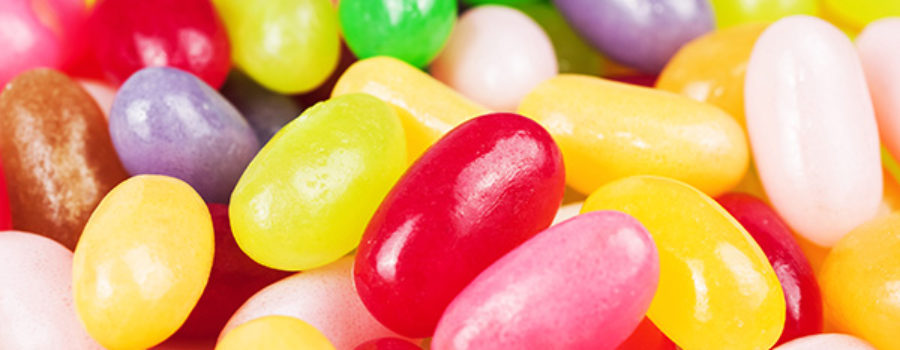Common knowledge tells you that candy is terrible for you. It is full of artificial sugars and other ingredients that have been refined beyond recognition, to the point where the end product has little – if any – nutritional value. The obvious consequences of eating too much sugary candy are a higher number of cavities, poor dental health, and obesity, but health experts are starting to see many other longer term consequences like higher rates of diabetes, cardiovascular disease and osteoporosis. We decided to dig deep and come up with some common candy ingredients that you might share with your kids that’ll make them think twice about popping that next piece of candy into their mouths!
1. Candy contains bug poop – Okay, it’s not really poop, but a common ingredient in candy called shellac (used to make candy shiny) comes from the excretion of the female Lac beetle.
2. Candy comes from a beaver’s butt – Alright, maybe this is also a bit of a stretch, but glands near the anus of a beaver excrete a chemical called castoreum. Castoreum is often used to enhance flavor in vanilla and raspberry tasting foods, including candy.
3. Candy ingredients have been linked to ADHD – there is compelling evidence to suggest that food dyes common in many types of candy can trigger hyperactivity in children. In Europe, many of these dyes are banned, or there are warnings on food products containing them. But in Canada and the US they are still used freely.
4. The “lighter” side of a Butterfinger – one of the many ingredients of a Butterfinger is tertiary butylhydroquinone (TBHQ). Where else might you find TBHQ? In lighter fluid.
5. How about some more animals? Gelatin is a thickening agent used in many types of gummy candy. Gelatin is extracted from animal skin and/or bones. Yum! (Not really.)
6. This is b-a-a-a-a-a-a-a-d – oil is extracted from sheep’s wool and processed into a gooey substance called lanolin. Lanolin is used in the production of bubble gum, but is conveniently renamed “gum base” (we presume “sheep hair oil” didn’t make the cut for being included on the ingredients list).
7. No bones about this one – calcium triphosphate is used to filter and discolour sugar, which, in one form or another, is a major ingredient in most candy products. And where does calcium triphosphate come from? Charred animal bones.
There are other ingredients used in candy, chocolate and other foods products that will make you a little queezy. While we don’t think the above list will stop your little ones from satisfying their sweet tooth, we would emphasize the importance of brushing and flossing on a regular basis, especially after they eat sugary candies. Bacteria naturally found in the mouth consume sugary saliva and produce an acidic chemical that can damage teeth, causing cavities and gum disease.
If you’re looking for a family dentist to help keep your and your family’s smiles healthy and beautiful, Orion Dental would love to help! Call either our Milton office at (905) 636 – 9770 or our Scarborough office at (416) 291 – 0306 and book an appointment.








